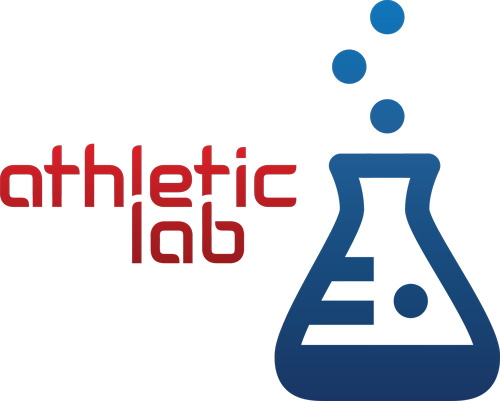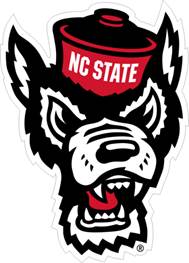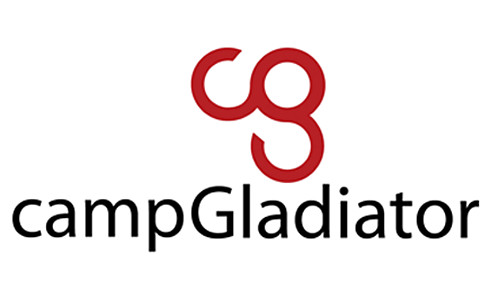Written by: Will Parker, CSCS, USAW, FMS at Raleigh Orthopaedic Performance Center
Since I started lifting weights 24 years ago, I have heard coaches and/or trainers talk about using “good form.” Currently, I have been a fitness professional for over 17 years and have worked with many clients who have years of fitness experience yet still need a lot of help with their form. In this article, we will dive into identifying the Pillar (3 structures which make up the foundational frame of the human body), what position they should generally be in and give you some easy exercises to help you get started strengthening them.
The Pillar
The first step is to explain the three fundamental structures of the human skeletal framework called the “Pillar.” These structures include the:
- Pelvis / Hips
- Axial Spine / Core
- Scapulae / Shoulder Blades
The basic design of the Pillar is to create a rock solid frame by which ones arms and legs can more effectively control their Center of Mass, allowing for more efficient Kinetic Linking, which is another vital concept in the operation of our biomechanical nature. Kinetic Linking is the sequence of muscle and tendon that activate in order to accomplish an anatomical movement. This is important because if one or more muscles and/or tendons required to complete a specific task are weak, immobile, non-supple, damaged, etc., then the entire movement is now functioning at a suboptimal state. When this inefficiency occurs, performance and function decreases while injury risk increases.
Now that we have identified the three structures of the Pillar and what Kinetic Linking means, we need to understand the ideal biomechanical position of the Pelvis, Axial Spine and Scapulae. In general, the most advantageous position of the Pillar is to be in Neutral. This allows one to create and absorb force in the most efficient way possible through the musculoskeletal system. A Neutral Pillar works just like a steel beam in a load bearing wall of a building. If that beam (pillar) has a crack, bend or other dysfunction, it would negatively impact the load it can safely hold thus weakening the entire building (human body).
Pelvis
There are three problem positions I see in people: Anterior Tilt (think Jennifer Lopez), Posterior Tilt (Steve Urkel) and Lateral Elevation or Depression (Shakira or Hula dancers). The most common of these three positions in my experience is the Anterior Tilt. This is especially the case in power or sprint based athletes like football or basketball. I have also seen it many times in hyper mobile based athletes like dance, cheer, swimmers, etc. Ideally, we do not want our Pelvis to be in any of the above positions while in our relaxed default state.
Axial Spine
The fitness industry has emphasized the muscles of the Core or Axial Spine for many, many years now. So why is low back pain still so prevalent, even in the “Fit” population? I theorize a primary variable is due to many aesthetic core routines like crunches and their variations, instead of those emphasizing being strong in a neutral alignment. A plank for example is a great exercise, but one that often is done out of Neutral. I see many, who unknowingly, collapse into their lumbar spine thus loading the posterior aspect of their vertebrae onto one another because the associated musculature is totally fatigued beyond its capabilities. This allows one to hold the exercise for more time however, it is also encouraging and loading an “S” shaped spine.
Most in our culture have an “S” shaped spine, which means one has a Kyphotic exaggerated backward curvature of the thoracic region of the spine while also demonstrating a Lordotic (swayback) forward curvature of the lumbar region of the spine. Again I theorize, our exercise routines (one example listed above), lifestyle habits (hours of sitting daily) and nutritional habits (over eating leading to overweight or obesity) all play a role in the development of our “S” shape spines. The ideal, Neutral, spinal position is that of a “J” shape. I will leave you with the following quote from Dr. Solomon Kamson, MD, PHD, of the Spine Institute Northwest from this article. “There is not a genetic component that makes the backs of some groups of people J-shaped. In fact, this is the spinal shape that is seen in all young children and it is considered a more natural spinal shape.”
Scapulae
The Scapulae have four patterns of natural movement: Elevation (shrug), Depression (lowering or pulling towards the hips), Protraction (rounding forward) and Retraction (backward pinch). Most in our culture display a combination of elevation and protraction. In order to bring these people back to Neutral, we would need to work on the corresponding antagonist of each movement, depression and retraction in this situation. With that said, there are also many who rest/default more in a scapular depressed and/or retracted position. Their need for Neutral would be found in scapular elevation and protraction exercises.
***Note: soft tissue work and specifically prescribed stretching need to also be done in conjunction with the mentioned corrective exercises for long term sustained positioning. ***
Corrective Exercise
Lumbar Anti-Extension – prevent lumbar collapse / swayback
- Lean against a strong sturdy wall with your head, shoulders & hips against the wall, feet shoulder width & comfortably out in front of you
- Take a big inhale, pulling your belly button & low back away from the wall
- With a long steady 5 second exhale, actively pull your belly button & low back into the wall
- Repeat for 10 repetitions emphasizing a long 5 second exhale while your inner core muscles & low back actively pressing into the wall
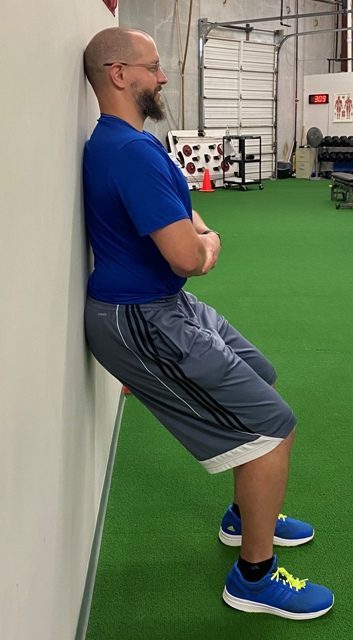
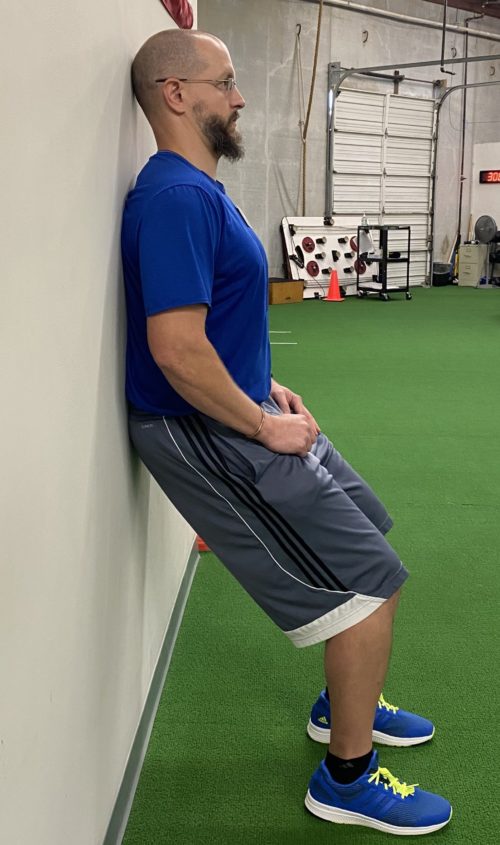
Thoracic Anti-Flexion – prevent thoracic slouch
- Lean against a strong sturdy wall with your shoulders, low back & hips against the wall, feet shoulder width & comfortably out in front of you
- Take a big inhale, protracting your head & chin forward away from the wall
- With a long steady 5 second exhale, pull your head into the wall keeping your chin down (this normally feels awkward in the neck & jaw area)
- Repeat for 10 repetitions emphasizing a long 5 second exhale while the base of your skull is actively pressing into the wall


***Note: consult your physical therapist, physician or exercise professional before participating in the mentioned exercises. ***
Summary
In closing, in order to increase functional physical activity and decrease injury risk, one needs to be aware of the three structures of the Pillar, how to get each of them into a Neutral alignment, and then strengthen those patterns and corresponding muscles through focused normal daily activities and specific targeted exercises. If you are interested in our various training options and learning more about progressively training your body around a Neutral Pillar contact me at wparker@raleighortho.com
Sneak Peek
Be on the lookout for our upcoming Raleigh Orthopaedic Performance Center Weight Lifting Clinic. This event will be perfect for both first timers as well as the more seasoned fitness enthusiasts. We are in the process of creating this event and working out the details of how to best serve you, our athletes, clients and patients. If you are interested in learning more about this event contact McKinley Almond at malmond@raleighortho.com so we can send you direct information when it becomes available.
About the Author: Will Parker CSCS, USAW, FMS
Will graduated from East Carolina University in 2006 with a Bachelor of Science degree in Exercise & Sports Science. He became a Certified Strength & Conditioning Specialist (CSCS) through the National Strength & Conditioning Association (NSCA) in 2007. From 2006-2008, Will was an Assistant Strength & Conditioning Coach at NC State University working with Football, Basketball, Baseball, Soccer, Track & Field along with several other teams. In 2012, he earned a United States of America Weightlifting (USAW) Level 1 certification.
Will has worked as a Performance Specialist for Raleigh Orthopaedic since 2006. He has worked with athletes from the NFL, NBA, MLB, NHL, and MLS along with many from Division 1, 2 & 3 Universities. Will specializes in performance evaluation, speed training (acceleration, absolute speed, lateral movement, multi-directional & deceleration), functional strength training (foundation, endurance, hypertrophy, max strength, power, and body composition), injury risk assessment, soft tissue treatment, increasing soft tissue elasticity and goal management.
Will enjoys interacting with his clients, helping them achieve their speed, strength and/or weight loss goals and subsequently set higher goals to work toward.
Email Will to schedule a consultation for personal training or performance training WParker@RaleighOrtho.com




